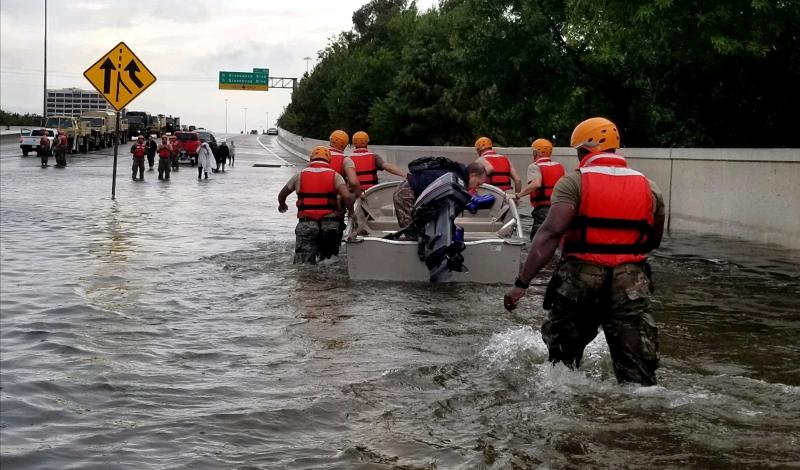
During the major disasters and other emergency situations, the most vulnerable groups of the population are individuals with special medical needs. The target population involves patients, such as the ones on dialysis who possess special healthcare needs. One of the group is comprised of patients with end stage renal disease, who need dialysis treatment access or availability of kidney replacement surgery. Chronic renal failure is the gradual decline in kidney function until it disappears completely, caused by the progressive death of kidney tissue as a result of chronic kidney disease. Chronic kidney disease is an important medical and social problem in modern medicine. The number of patients with end-stage chronic renal failure is increasing rapidly. The development of renal replacement therapy technologies has led to a significant increase in the quality of hemodialysis and an increase in the life expectancy of patients with end-stage renal failure. Although the current policies provide a set of manuals and protocols that ensure the protection of these patients, the majority of the burden is put on the shoulders of the healthcare facilities.

The Problem
Every year in some regions, there are strong floods of rivers, breakthroughs of dams and dams, earthquakes, storms and hurricanes, forest and peat fires. Each natural disaster, accident, and catastrophe has its own characteristics, the nature of the damage, the volume and scale of destruction, the magnitude of disasters, and human losses. Each, in its own way, leaves an imprint on the environment. Knowledge of the causes and nature of natural disasters allows, with early adoption of protective measures, with reasonable behavior of the population, to significantly reduce all types of losses. Natural disasters are dangerous natural phenomena or processes of geophysical, geological, hydrological, atmospheric, and other origins of such a scale that cause catastrophic situations. They are characterized by a sudden disruption of the life of the population, destruction, and destruction of material values, damage, and death of people and animals (Veenema, 2019). The true scourge of humanity is earthquakes, floods, a massive forest, and peat fires, mudflows and landslides, storms, hurricanes, tornadoes, snow drifts, icing.
The problem is the fact that current policy regarding emergency management and risk preparedness put a heavy burden of responsibility on healthcare facilities providing care for the target population. The issue is that the manual primarily focuses on four “mutually reinforcing” components, such as planning, exercising, evaluating, and organizing (“Disaster preparedness: A guide for chronic dialysis facilities,” n.d.). Therefore, there is a lack of specialized agencies that can aid the vulnerable target population and assist the healthcare facilities during an emergency, such as natural disasters. It is stated that medical special needs (MSN) patients are considered to be an evacuation barrier, and the households with MSN individuals possess more barriers during an emergency (Meyer et al., 2015). Therefore, the stakeholders are both medically vulnerable patients and healthcare facilities that provide the care.
It is important to correctly predict the occurrence and development of natural disasters, early warning of both the authorities and the population about the impending danger. In addition, work on the comprehensive localization of natural disasters is needed and urgently needed in order to narrow the zone of destruction and provide timely assistance to the victims. Clear and well-thought-out measures are more effectively carried out measures to eliminate their consequences where natural disasters, accidents, and catastrophes are opposed by the high organization.
Evaluation Criteria

Evaluation criteria are derived from the disaster occurrences that showed the major weak points of the current protocol. For example, hurricane Katrina resulted in devastation among patients with end stage renal disease because they needed a kidney transplant or dialysis treatment (Wakui et al., 2017). According to Centers for Disease Control and Prevention (CDC), half of the access and functional needs communities (AFN) is comprised of individuals with chronic conditions, among which people with end stage renal disease are the most prevalent group (“Access and functional needs communities,” n.d.). Therefore, the evaluation will be based on readiness for the response, the effectiveness of the plan execution, and costs. The consequences of natural disasters are expensive, and the cost is constantly increasing. Increasing losses and prices of recovery have led to a general understanding of the threat that natural disasters pose to sustainable development. Natural disasters in hazardous regions, in most cases, can cause casualties among vulnerable citizens.
Alternative Policies

The alternative policy is based on the creation of specialized agencies that operate in a particular location. It is stated that the United States does not fully utilize the overall potential behind community-based organizations (CBOs) (Gin et al., 2016). CBO-based policy regarding emergency preparedness and response during natural disasters and other emergencies can remove the unnecessary burden from healthcare providers and be solely focused on individuals with medical needs. These localized organizations can be deliberately put in high-risk zones, where patients with special needs are in the most danger. CBOs can always be ready to respond to natural disasters by planning more resilient infrastructure, holding additional equipment for dialysis, and deploying rescue teams adapted for individuals with medical needs.
Evaluation of Alternative Policies

It is important to note that the current system uses a generalist approach regarding emergency preparedness and response, and thus, all healthcare facilities are required to be ready to protect their patients. However, these organizations also perform other highly essential tasks, such as providing healthcare, which means that effectiveness is significantly reduced. In contrast, community-based organizations are specialized and focused on a single issue of being prepared for an emergency, which makes it more effective. In addition, CBOs possess more readiness and preparedness to respond to the situation because it is its primary objective (Veenema, 2019). Lastly, CBOs are more cost-efficient due to the fact that not all regions require these organizations. Generalist policies force healthcare facilities in safe zones to be prepared for natural disasters, which is a major waste of resources. CBO offers a more targeted approach that allocates the required efforts and resources in regions that are prone to danger the most.
Despite the strategic importance of this problem, nowhere has a single methodology been created that would allow communities to build a system for assessing the effectiveness of emergency programs at various levels. Common to most of them is the non-fulfillment of target indicators and, as a result, failure to achieve planned results. The current situation requires the development and implementation of approaches aimed at improving the efficiency of emergency program management. Approaches to effective emergency management – program development can be seen as an attempt to combine all the instruments to achieve the objectives of the safety policy. At the same time, the analysis of the practice of different cases gives reason to say that in most cases, these programs need further improvement since the results obtained in the course of their implementation do not fully correspond to the concept of effectiveness. In the context of limited budget allocations, the problem of increasing the efficiency of their use in order to achieve the set goals becomes highly urgent. Thus, experts and practitioners should focus on the implementation of emergency preparedness process approaches to effectively manage such programs. The difficulty of this task is that the specificity of this generalized model does not allow a direct focus on vulnerable regions.
Recommended Policy and Implementation
The recommended policy is based on CBOs, which are deliberately designed to have the natural disaster-resilient infrastructure and possess all essential equipment in order to provide healthcare for patients with special needs. They also can deploy the target population focused rescue teams, which are properly equipped with the necessary technology and skills to assist the patients. Therefore, the implementation needs to be based on three main objectives, such as setting up CBOs with an advanced infrastructure, providing the medical equipment, such as dialysis machines, and hiring skilled emergency workers. Disaster resilient towns are cities that have competent and responsible local authorities that represent the wider population. People have the opportunity to participate in decision-making and development plans for the development of their city together with local authorities. Local authorities and residents are aware of the existing risks and create a local information base about them. In addition, disaster prevention and mitigation measures must be taken, monitoring and early warning technologies introduced to protect residents and infrastructure. The risk of disasters is minimized as the population lives in homes and areas that have the necessary utilities and infrastructure built in accordance with reasonable building codes.
The general implementation of the policy will take place, taking into account the number of stages. It is important to create an organizational system and a coordination procedure that allows understanding the essence of disaster risk and ensuring its reduction through interaction within civil society. Funds are needed for disaster risk reduction by all stakeholders, including households, the private and public sectors. The provision of up-to-date data on threats and vulnerabilities takes place, as well as full access of the population to this information and to plans to ensure the resilience of the city. In addition, it is important to invest in critical infrastructure that helps reduce risk and to assess the safety of educational and medical institutions and carry out their reconstruction if necessary. It is necessary to implement and enforce realistic building codes and spatial planning principles that take existing risk factors into account. First of all, the needs of the affected population should be taken into account when implementing recovery measures after any natural disasters.
Conclusion
In conclusion, natural disasters and other emergency situations are uniquely dangerous for people with special medical needs, such as patients with end stage renal disease. Under the current policy, their heavy reliance on specific medical equipment is the issue that needs to managed by the healthcare facilities. However, it is a generalist approach that results in cost inefficiency, response ineffectiveness, and poor readiness. CBOs, as an alternative policy, can be highly specialized to aid the target population without putting a heavy burden on healthcare providers.
References
Access and functional needs communities. (n.d.). 2020, Web.
Disaster preparedness: A guide for chronic dialysis facilities. (n.d.). 2020, Web.
Gin, J. L., Kranke, D., Saia, R., & Dobalian, A. (2016). Disaster preparedness in homeless residential organizations in Los Angeles county: Identifying needs, assessing gaps. Natural Hazards Review, 17(1), 1-8.
Meyer, L., Vatcheva, K., Castellanos, S., & Reininger, B. (2015). Barriers to disaster preparedness among medical special needs populations. Frontiers in Public Health, 3, 1-8.
Veenema, T. G. (2019). Disaster nursing and emergency preparedness. Springer.
Wakui, T., Agree, E. M., Saito, T., & Kai, I. (2017). Disaster preparedness among older japanese adults with long-term care needs and their family caregivers. Disaster Medicine and Public Health Preparedness, 11(1), 31-38.